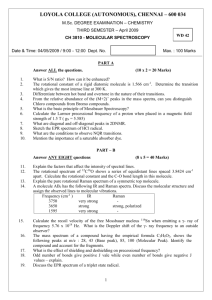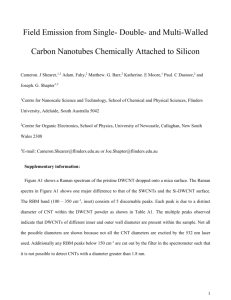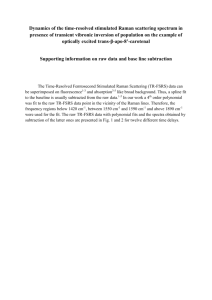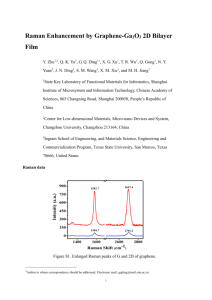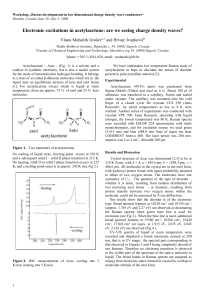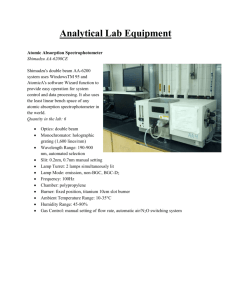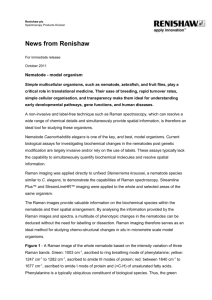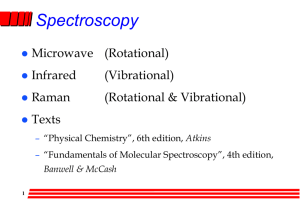Supplementary Information
advertisement
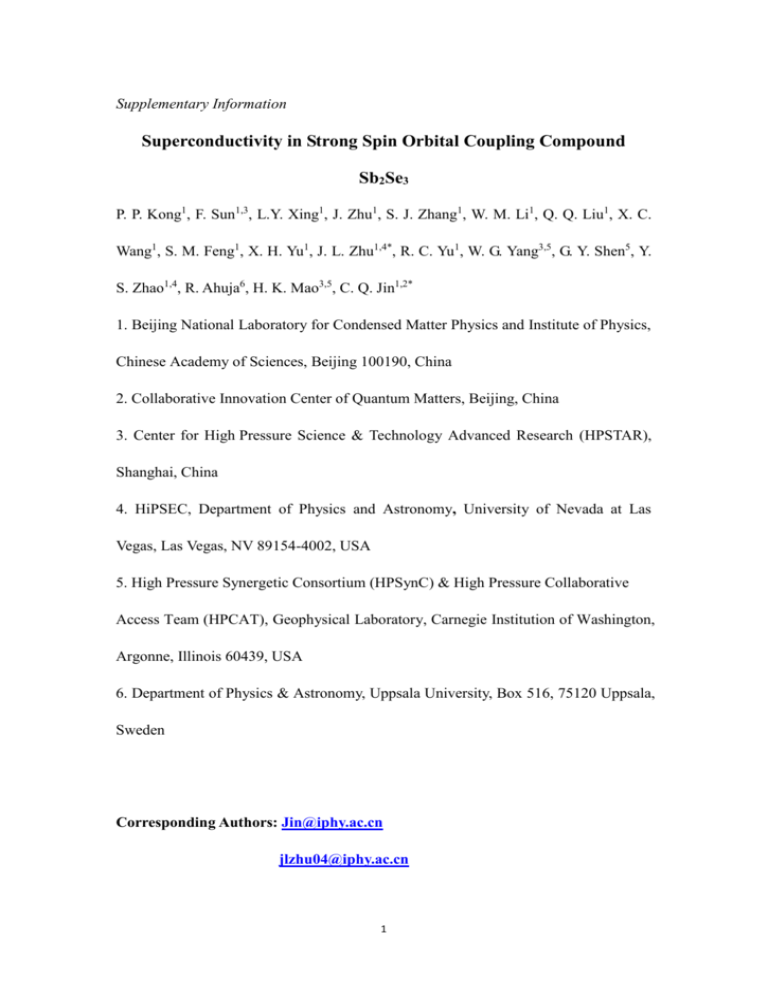
Supplementary Information Superconductivity in Strong Spin Orbital Coupling Compound Sb2Se3 P. P. Kong1, F. Sun1,3, L.Y. Xing1, J. Zhu1, S. J. Zhang1, W. M. Li1, Q. Q. Liu1, X. C. Wang1, S. M. Feng1, X. H. Yu1, J. L. Zhu1,4*, R. C. Yu1, W. G. Yang3,5, G. Y. Shen5, Y. S. Zhao1,4, R. Ahuja6, H. K. Mao3,5, C. Q. Jin1,2* 1. Beijing National Laboratory for Condensed Matter Physics and Institute of Physics, Chinese Academy of Sciences, Beijing 100190, China 2. Collaborative Innovation Center of Quantum Matters, Beijing, China 3. Center for High Pressure Science & Technology Advanced Research (HPSTAR), Shanghai, China 4. HiPSEC, Department of Physics and Astronomy, University of Nevada at Las Vegas, Las Vegas, NV 89154-4002, USA 5. High Pressure Synergetic Consortium (HPSynC) & High Pressure Collaborative Access Team (HPCAT), Geophysical Laboratory, Carnegie Institution of Washington, Argonne, Illinois 60439, USA 6. Department of Physics & Astronomy, Uppsala University, Box 516, 75120 Uppsala, Sweden Corresponding Authors: Jin@iphy.ac.cn jlzhu04@iphy.ac.cn 1 Figure S1 crystal parameter evolutions of Sb2Se3 crystal under pressure (a) AD-XRD patterns of Sb2Se3 at room temperature with pressure up to 30 GPa. The wavelength is set at 0.4246 Å. (b) Rietveld refined XRD pattern of Sb2Se3 at 10.3 GPa. Hollow dots correspond to the measured spectrum and the red solid line represents the best fitting. The difference spectrum between the measured and the refined pattern is depicted by blue line. Red vertical ticks mark the Bragg peak positions. (c) Pressure dependence of lattice parameters a, b and c, as well as volume V. Birch–Murnaghan equation of state fitting indicates that the bulk module is 32.7 (8) GPa with B0’ = 5.6 (4), which is consistent with the value in Ref. [1]. 2 Figure S2 Schematic show of crystal structure (a) Sketch of the coordination environment around the Sb1 and Sb2 cations. The Sb1 and Sb2 cations are coordinated by 7 and 7+1 Se anions1, respectively. Sb1, Sb2, Se1, Se2 and Se3 ions are denoted as magenta, blue, cyan, green and orange spheres, respectively. ∠ Se1-Sb2-Se3 and ∠Se3 -Sb2-Se3 are denoted by blue and orange arcs, respectively. (b) Top view of a-b plane suggests that the decrease of ∠Se1-Sb2-Se3 (< 90°) will mainly rotate the polyhedral of Sb(1)Se7 (magenta polyhedra) normal to the c-axis. Green arrows denote moving direction of Se3 atoms while ∠ Se1-Sb2-Se3 decreasing. (c) Schematic show along other direction proposes that the decreases of ∠Se3-Sb2-Se3 will tilt and distort the polyhedral of Sb(1)Se7 (magenta polyhedra). Yellow arrows denote moving direction of Se3 atoms with decreasing ∠ Se3 -Sb2-Se3. 3 Figure S3 Configuration of peak width of M2 Raman mode Full width at half maximum (FWHM) of the M2 mode (solid squares) as a function of pressure and the solid line is drawn as guide to the eyes. FWHM of the M2 mode has two anomalies located at around 2.5 GPa and 10 GPa, respectively. 4 Figure S4 Heating effect of Raman laser power at atmospheric conditions The Raman spectrum with high laser power is analogous to Efthimiopoulos’s report1. The Raman spectrum with low laser power is similar to Bera’s report2. The inset is the Lorentzian fitting to the Raman spectrum collected at low laser power, the phonon modes are denoted the same as that in high pressure Raman spectra. Seven phonon modes are M1 (100.3 cm-1), M2 (118.6 cm-1), M3 (129.7 cm-1), M4 (154.6 cm-1), M5 (184.3 cm-1), M6 (191.3 cm-1), M7 (213.1 cm-1), respectively. 5 References: 1. Efthimiopoulos, I. et al. Sb2Se3 under pressure. Sci. Rep. 3, 2665 (2013). 2. Bera, A. et al. Sharp Raman Anomalies and Broken Adiabaticity at a Pressure Induced Transition from Band to Topological Insulator in Sb2Se3. Phys. Rev. Lett. 110, 107401 (2013). 6

